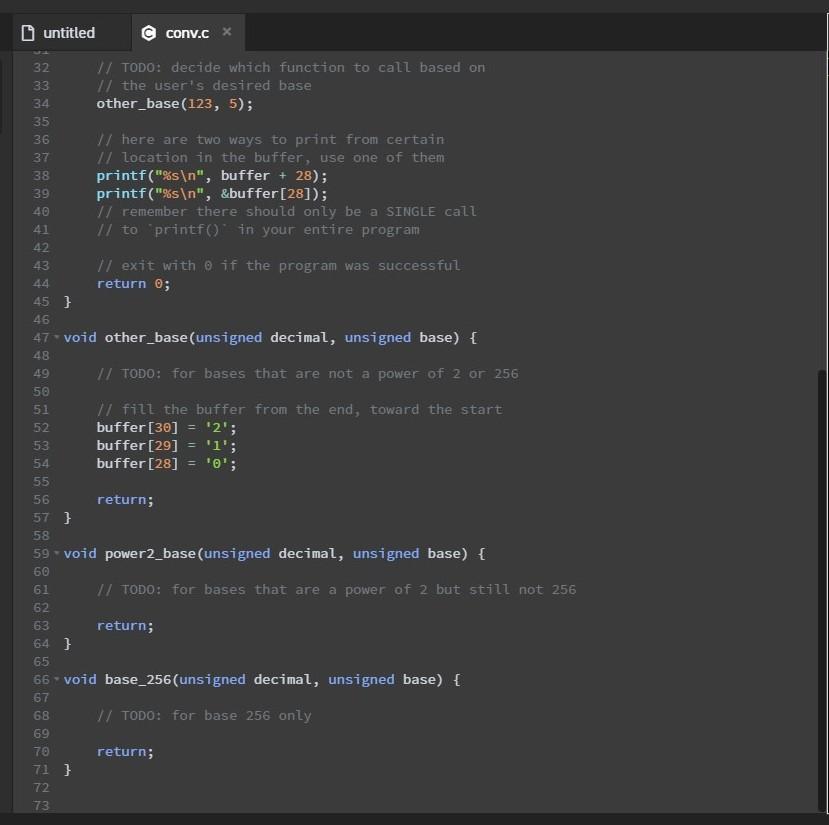Answered step by step
Verified Expert Solution
Question
1 Approved Answer
CODE IS IN C DESCRIPTION You are to write a simple C program that will take a decimal number and a base as command line







CODE IS IN C
DESCRIPTION You are to write a simple C program that will take a decimal number and a base as command line arguments and output the decimal number in that specified base. For example: $ ./cony 13 2 1101 $ ./conv 236709 8 716245 $ ./cony 1352275 11 843A91 $ ./conv 38572856 64 219Cu $ ./conv 3232236286 256 192.168.2.254 $ ./conv Usage: convStep by Step Solution
There are 3 Steps involved in it
Step: 1

Get Instant Access to Expert-Tailored Solutions
See step-by-step solutions with expert insights and AI powered tools for academic success
Step: 2

Step: 3

Ace Your Homework with AI
Get the answers you need in no time with our AI-driven, step-by-step assistance
Get Started


